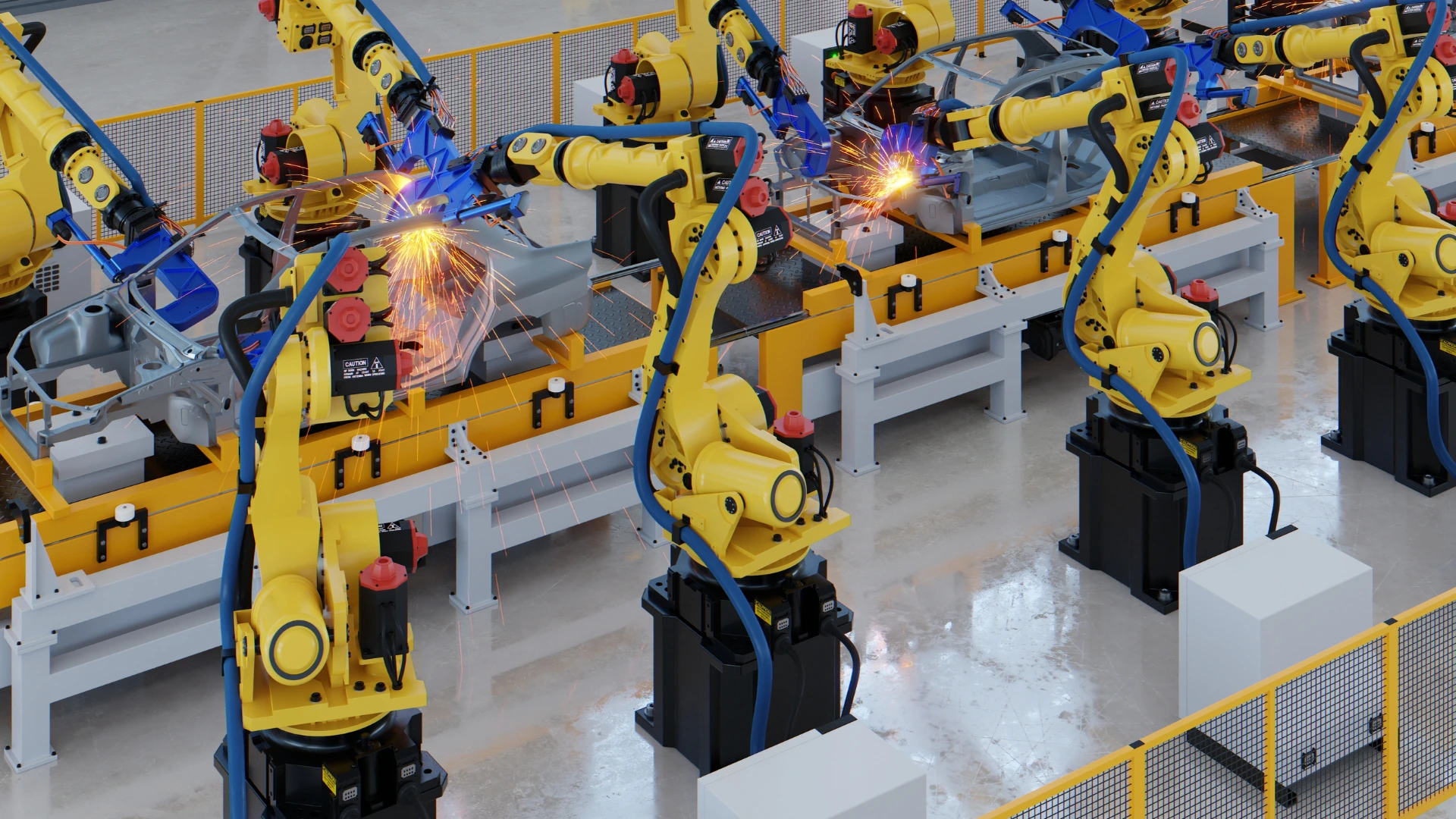
10 Industrial Robot Applications Transforming Manufacturing
Rise of Robotics in Modern Manufacturing
Walk through a modern plant, and steel arms whirl beside laser-guided shuttles. Sensors blink, conveyors glide, and human teams supervise rather than lift. Industrial automation now steers global output, with robots tackling tasks that demand speed, accuracy, or endurance. AES Holdings tracks these shifts, steering clients toward more innovative, safer, and reliable production environments.
Global robot installations climbed past five hundred thousand units last year, driven by cost efficiency, labor shortages, and relentless quality targets. Industries from automotive to food now lean on robotic solutions, trusting them to weld, paint, or palletize without fatigue.
Robotic Welding
High-heat arcs once relied on veteran welders alone. Robotic welding cells fuse chassis panels, pipe joints, and agricultural equipment with millimeter precision today. Vision cameras guide torch paths, tweaking amperage on the fly. The payoff includes smaller defect rates, tighter seams, and consistent bead profiles shift after shift.
Duty cycles stay high because robots shrug off sparks and heat. Human teams step back to monitor parameters, analyze data, and refine programs—tasks suited to creativity rather than brute endurance.
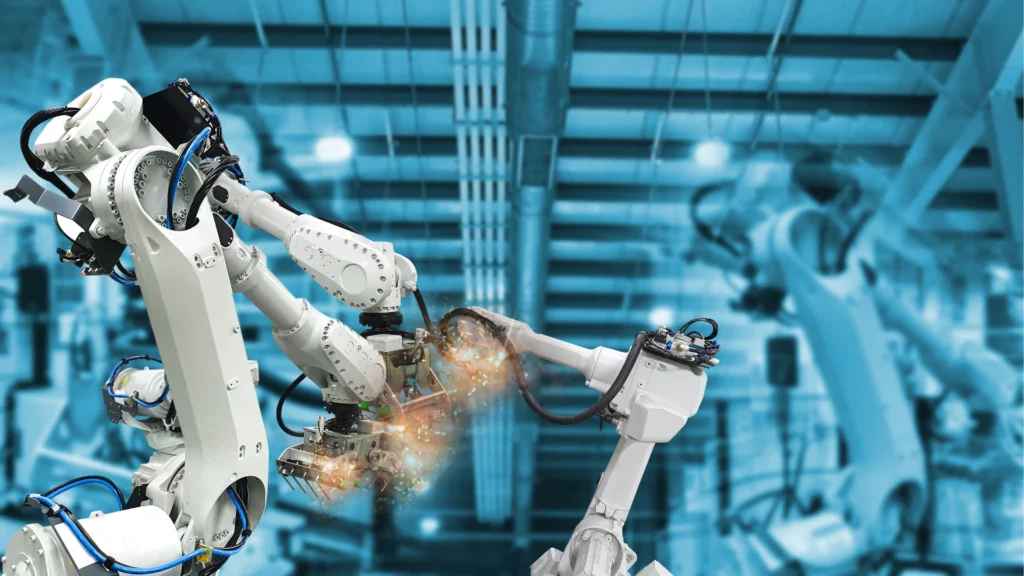
Robotic Assembly Lines
Electronic gadgets, driveline modules, and medical devices now roll down robotic assembly lines. Servo-driven wrists insert delicate fasteners without stripping threads. Force sensors verify seating pressure for every component.
Changeovers once consumed hours; modular grippers swap in minutes. Production planners love that agility, especially when demand forecasts shift. Robots handle miniature screws at sunrise and battery packs by afternoon, guided by updated recipes from central servers.
Material Handling and Palletizing Robots
Heavy cartons seldom burden human backs now. Six-axis palletizing robots stack payloads two meters high, reading barcodes, calculating weight, and arranging patterns for optimal stability. Conveyor-mounted arms transfer parts between milling, drilling, and inspection cells, shaving idle seconds from cycle time.
End-of-arm tooling adapts to bags, drums, or shrink-wrapped bundles. Vacuum cups, clamps, and slip sheets secure goods while laser scanners keep movement safe around crews.
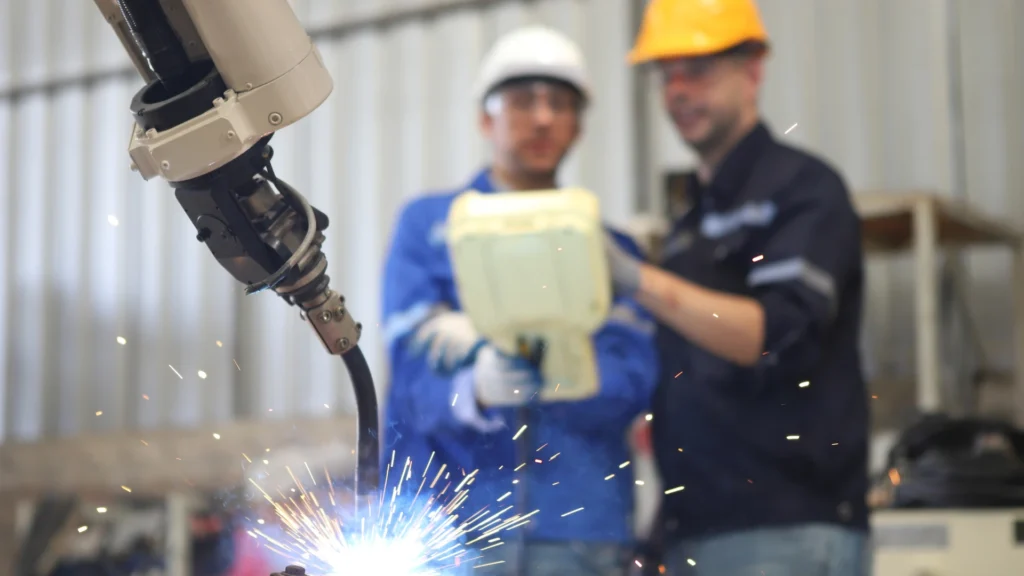
CNC and Robotic Machining Systems
Computer-numerical-control machining gained an ally in robotic loading. Articulated arms fetch blanks from racks, feed lathes, and retrieve finished pieces without pause—multi-axis robots even mill composite panels, following spline curves unreachable for traditional gantries.
Tool wear sensors relay data to supervisory dashboards, scheduling inserts for replacement before tolerances drift. Managers gain an uninterrupted flow of parts plus predictive insight into spindle health.
Painting and Coating Robots
Automotive shells, aircraft wings, and furniture frames emerge flawless under robot sprayers. Flow meters govern atomization, while electrostatic heads cut overspray. Color swaps finish swiftly, conserving solvents and slashing booth downtime.
Consistent film thickness means fewer touch-ups and stronger corrosion resistance. Workers avoid inhalation hazards and oversee operations from climate-controlled control rooms instead.
Robotic Packaging and Labeling
Fast-moving consumer goods race from filler to carton under the watchful gaze of robotic packaging cells. Delta robots orient pouches, pick them, and drop them into trays at lightning speed. Integrated printers apply traceable labels, and vision stations confirm text clarity plus seal integrity.
Allergen separation becomes simpler because tool-less change parts lower cross-contact risk between recipe runs. Compliance teams appreciate serialized data trails, easing audits and recalls.
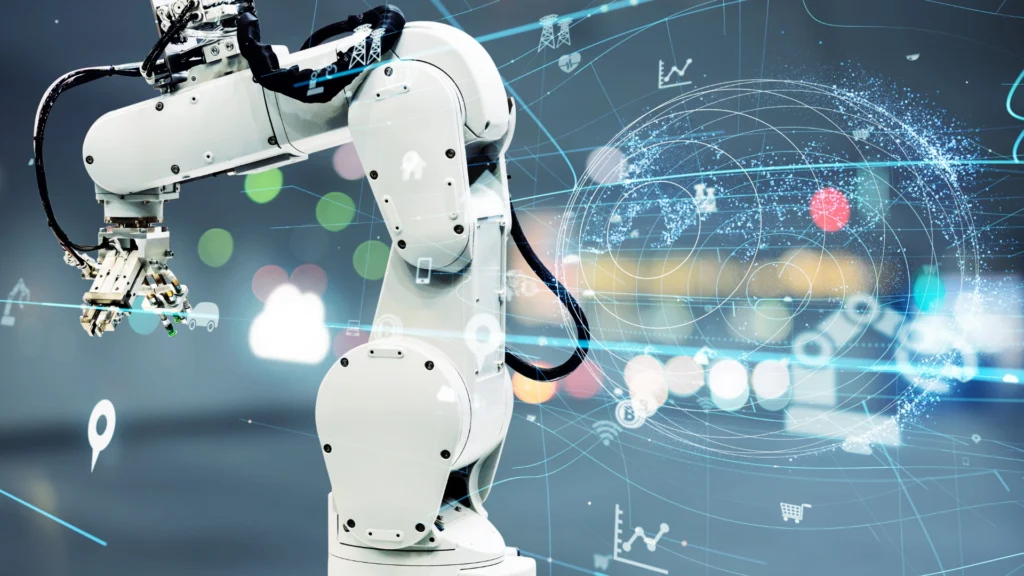
Industrial Robots
Traditional six-axis arms remain the workhorses of fabrication. Payload ranges span from tiny electronic subassemblies to entire vehicle bodies. Hardened reducers withstand shattering torque loads, while multi-contact rotary joints supply power, data, and pneumatics through a single wrist.
Modern controllers sync dozens of units, choreographing complex dances across welding bays or press shops. Cycle logs feed cloud analytics, guiding maintenance crews toward early bearing replacements.
Collaborative Robots
Plant managers once fenced robots behind steel cages. Collaborative robots—cobots for short—rewrite that rule. Torque-sensing joints halt motion the instant resistance rises, protecting nearby staff. Lightweight frames mount on mobile bases, rolling between workstations by morning memo.
Programming uses hand guidance. Operators drag the arm through path points, press record, and deploy within minutes. Cobots insert fragile circuit boards and test buttons or dispense adhesives alongside human peers, covering dull sequences while people solve nuanced tasks.
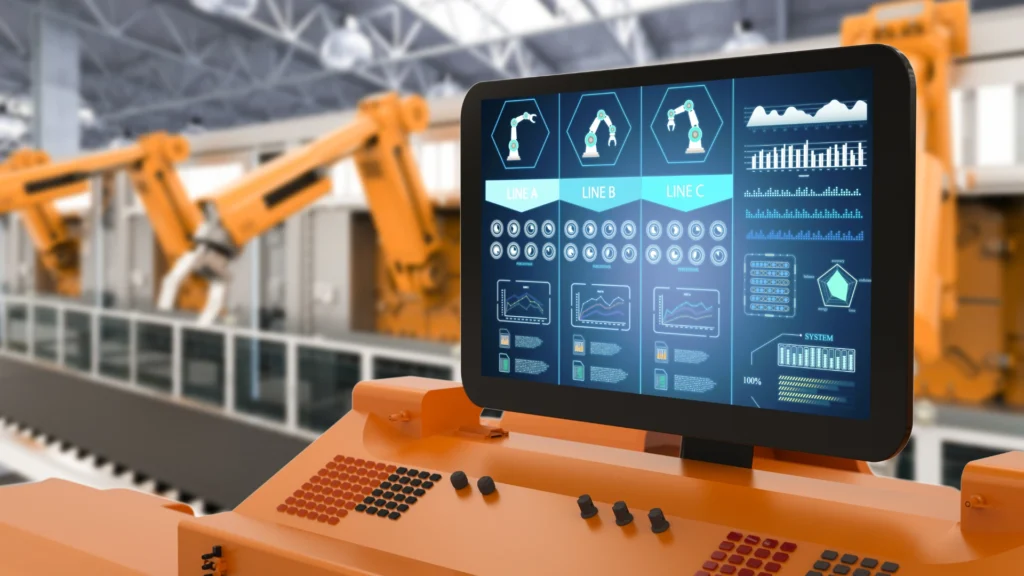
A Smarter Approach to Cloud-Linked Robotics
Industrial robots now pair with AI platforms for real-time optimization. Edge processors crunch sensor data on vibration, temperature, and positional drift. Machine-learning models flag anomalies before quality slips.
Remote engineers tweak motion paths or spray patterns from secure dashboards, pushing updates plant-wide. Over-the-air upgrades lengthen hardware lifespan, as software boosts capabilities long after the capital purchase.
Robotic welding slices through steel plate with laser accuracy; cobots share benches with skilled technicians; palletizers lift tonnage round the clock. Ten applications highlight why automation drives manufacturing progress today. AES Holdings guides partners through selection, integration, and continuous improvement, locking in productivity, safety, and quality gains.
Plants no longer measure success solely by units per hour. They track uptime, traceability, and ergonomic relief as equally vital metrics. Robots answer every demand, from micro-fastener insertion to final pallet wrap, forging a resilient future for global industry.


